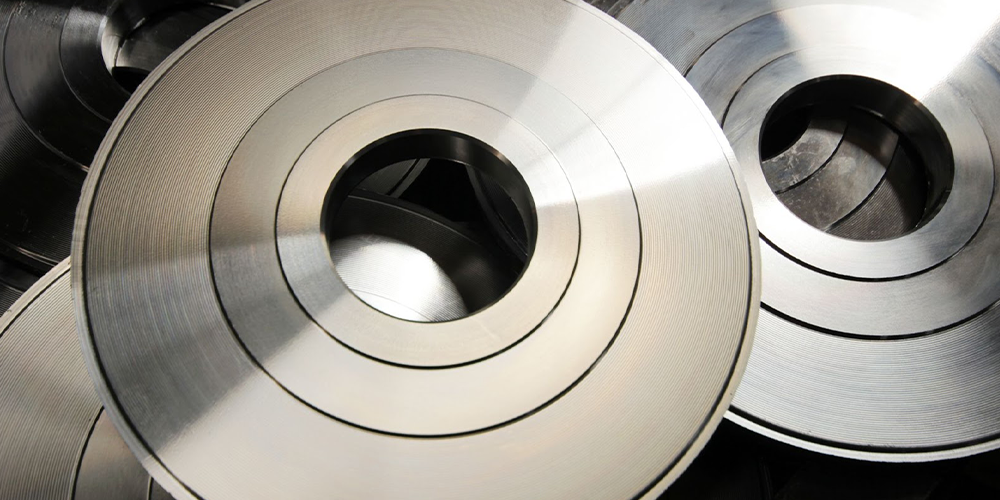 Our Blogs
Our Blogs
Mild Steel: Uses, Types, and Why It's a Construction Essential
In the world of metals, mild steel stands out as one of the most commonly used and versatile materials. From the towering steel skeletons of modern skyscrapers to the humble nails used in home improvement, mild steel applications are everywhere. But what makes it so essential in construction and beyond?
Let's dive into what is mild steel, explore its types, understand its properties, and learn why it remains a cornerstone of the building and manufacturing industries.

What is Mild Steel?
Mild steel, also known as MS steel, is a type of carbon steel with a low amount of carbon - usually around 0.05% to 0.25% by weight. This relatively low carbon content makes it more malleable, ductile, and easier to work with compared to higher carbon steels.
Unlike stainless steel, which contains significant amounts of chromium and nickel, mild steel material has little alloying content, which contributes to its affordability and widespread use. While it may not resist corrosion as well as stainless steel, its strength, weldability, and cost-effectiveness make it ideal for a wide variety of uses.
Types of Mild Steel
Mild steel isn’t a one-size-fits-all solution. There are different types of mild steel, each suited for specific tasks and environments. Here are the most common ones:
1. Plain Carbon Mild Steel
This is the most basic form, containing the least amount of carbon. It is known for being easy to weld, cut, and shape. It is typically used in structural applications and general fabrication.
2. High-Tensile Mild Steel
This type includes a slightly higher carbon content or added alloying elements to improve strength without compromising too much on ductility. It is often used in automotive and heavy-duty construction work.
3. Cold-Rolled and Hot-Rolled Mild Steel
These refer to the processing methods:
Cold-rolled mild steel has a smoother surface finish and tighter tolerances, making it ideal for precision components.
Hot-rolled mild steel is processed at high temperatures and is more suitable for applications where appearance isn’t critical, such as beams and structural frames.
Each type has its own set of advantages, and the choice depends on the mild steel applications you’re targeting.
Mild Steel Uses Across Industries
The broad range of mild steel uses makes it indispensable across multiple sectors. Below are some of its most significant applications:
1. Construction and Infrastructurel
Perhaps the most well-known mild steel application is in the construction industry. From beams and columns to reinforcements and frames, mild steel is used to support structures big and small. Its high tensile strength, weldability, and cost-effectiveness make it ideal for creating the structural backbone of buildings, bridges, and railways.
2. Automotive Industry
Mild steel’s balance of strength and flexibility makes it an excellent material for automotive frames, panels, chassis, and exhaust systems. It absorbs energy during impacts, helping improve vehicle safety without adding too much weight.
3. Manufacturing of Tools and Machinery
Many tools, machinery parts, and equipment frames are made from mild steel material. Its machinability and durability make it a favorite in industries that require large-scale production or heavy-duty performance.
4. Pipelines and Tubes
Mild steel is used for water, gas, and even oil pipelines. Although it requires a protective coating to prevent corrosion, its toughness and formability make it a reliable choice for transporting fluids over long distances.
5. Household and Consumer Products
From kitchenware and furniture frames to fencing and shelving units, mild steel finds its way into our everyday lives. It offers a good balance between strength and affordability for consumer goods.
Why Mild Steel is a Construction Essential
Now that we’ve seen mild steel uses and types, let’s focus on why it’s a must-have material in construction:
1. High Strength-to-Weight Ratio
While being relatively lightweight, mild steel still offers impressive strength. This is especially important in multi-story buildings where material weight can significantly impact the foundation and design.
2. Excellent Weldability
One of the best things about mild steel material is how easy it is to weld. This makes on-site adjustments more manageable and cost-effective during construction projects.
3. Ductility and Malleability
Mild steel can be bent, twisted, and shaped without breaking. This property is crucial when components need to be customized or modified based on architectural requirements.
4. Cost-Efficiency
Compared to other metals like aluminum or stainless steel, mild steel is more budget-friendly, both in terms of raw material cost and fabrication.
5. Availability
Thanks to its widespread production and use, MS steel is readily available across the globe. This means shorter lead times and easier sourcing for construction companies.
6. Recyclability
As sustainability becomes a bigger concern in modern construction, mild steel’s recyclable nature adds another layer of appeal. It can be melted down and reused without compromising its properties.
Mild Steel vs. Other Steels: What Sets It Apart?
It’s essential to distinguish mild steel from other kinds of steel to understand why it’s chosen so often. For example:
Stainless steel is corrosion-resistant and shiny but far more expensive
High-carbon steel is harder but more brittle, making it less suitable for construction.
Alloy steel may offer specific benefits but often comes at a higher cost.
Mild steel, on the other hand, offers a versatile balance of strength, flexibility, and affordability, which explains its widespread adoption in real-world applications.
Conclusion
Understanding what is mild steel and its diverse benefits helps explain why it continues to be a cornerstone in construction, manufacturing, and engineering. Its versatility, coupled with its affordability and mechanical properties, makes it the go-to material for countless professionals across industries.
Whether you're designing the next big commercial complex or fabricating parts for machinery, mild steel offers a reliable, scalable, and durable solution.
If you're considering using MS steel for your next project, rest assured that you're opting for a time-tested material with limitless potential.
Top Comments
No Comments Yet For This Post
Post Your Comment Here
Your email address will not be published. Required fields are marked *